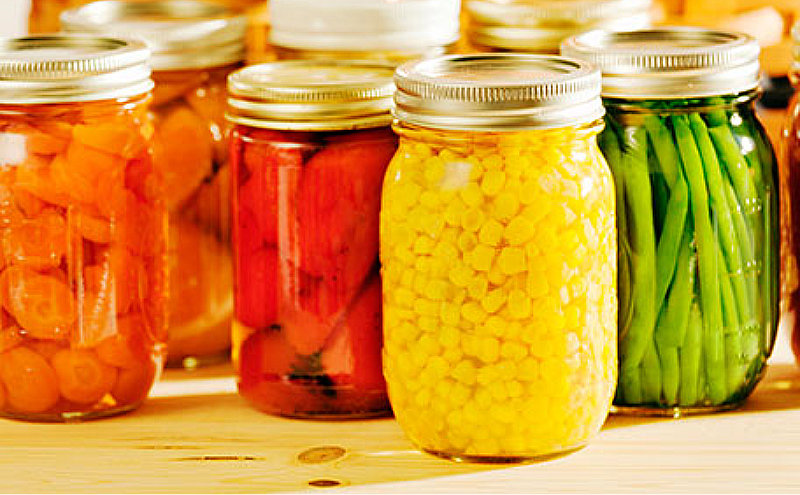Botulism In Home Canned Foods | Should I Be Worried?


No, you don’t need to be concerned about botulism if you followed recipes and instructions from reliable sources. Botulism from home canned foods are rare these days – given the well established safe processes.
However I do want to mention it, because it’s just good to know… especially if you’re into home canning.
From the National Center for Home Food Preservation:
Pressure canning is the only recommended method for canning meat, poultry, seafood, and vegetables.
The bacterium Clostridium botulinum is destroyed in low-acid foods when they are processed at the correct time and pressure in pressure canners.
Using boiling water canners for these foods poses a real risk of botulism poisoning.”
What are low acid foods?
Low-acid foods have a pH level greater than 4.6, which means they are not acidic enough to prevent the growth of botulinum bacteria. Examples are:
- Asparagus
- Green beans
- Beets
- Corn
- Potatoes
- Some tomatoes *
- Figs
- All meats
- Fish and seafood
*Tomatoes require added acid – lemon juice or citric acid – for safe home canning.
Why do I need to use a pressure canner for these foods?
Because it can reach temperatures above boiling, which is necessary to kill botulism spores.
Botulism Spores & Toxins
There are two things to bear in mind while talking about botulism. There are the botulism spores, and then there’s the botulism toxin. The spores create the toxins.
If the spores are present and not destroyed during the home canning process, they will later produce the toxin. It is the toxin which is the dangerous thing. Potentially causing paralysis and death. Therefore it is essential to destroy the spores so there’s nothing to produce the toxin.
But don’t let me scare you away from canning! It’s a rare thing these days for botulism toxin poisoning from home canning. Well established recipes and processes assure safe canning.
What Kills Botulism Spores?
(from UC Agriculture and Natural Resources)
Killing spores is a time and temperature relationship and it is also heavily influenced by the properties of the food. This is why we do not have one process that is applicable to all low acid foods.
The processes for low acid foods can range from 20 to 100 min at 240 to 250 F. Altitude affects the maximum temperature achieved and can thus impact processing times. Higher altitudes require longer processing times.
[ Water Bath canning only reaches 212 F, while pressure canners reach 240 to 250 F at proper pressures]
What Kills Botulism Toxin?
We’re not talking about the spores (which require high temperature during pressure canning to destroy). Rather, the resulting toxin…
Despite its extreme potency, botulinum toxin is easily destroyed. Heating to an internal temperature of 85°C (185° F) for at least 5 minutes will decontaminate affected food. (source)
If Clostridium botulinum bacteria survive and grow inside a sealed jar of food, they can produce a poisonous toxin. Even a taste of food containing this toxin can be fatal.
Boiling food 10 minutes at altitudes below 1,000 feet altitude should destroy this poison when it is present. For altitudes at and above 1,000 feet, add 1 additional minute per 1,000 feet additional elevation.
Boiling means that you are able to see the liquid in the food actively forming large foamy bubbles that break all over the surface.
Though it is a good safety precaution, do not rely on boiling your home canned food prior to consumption to destroy the toxin. Instead, use a pressure canner and do it right.
THE TAKEAWAY
Follow home canning recipes and processing techniques from established trusted sources.
Use a pressure canner when it calls for one. Even though your grandmother (or you!) may have successfully water-bath canned low-acid foods (by adding acids, long processing, etc.), better safe than sorry. Use a pressure canner.
Boil your low-acid canned foods for 10 minutes before consuming. Rather than microwaving, we always heat our home canned foods to at least 212 F (boiling temperature) for at least 10 minutes (e.g. beans, corn, tomato sauce, meats etc..). Either on the stove top, or in the oven, or a crock-pot, etc. Just in case…
[ Read: All American Pressure Canner (That Will Last Forever) ]
The Latest Ball Book of Canning and Preserving
(view on amzn)
